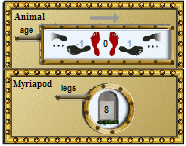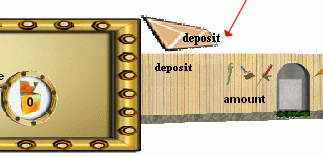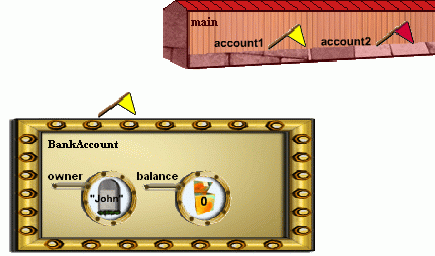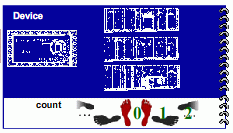









| A class can be thought to be a page in a blueprint book describing the contents and methods of objects in the class. The blueprint book has one sheet for each class. | 
|
| An object is depicted as a watch panel where each member variable is represented within a monitor showing the value of the variable. Each member variable is represented with an image revealing its rolea. | 
|
| An object that belongs to a subclass is a collection of stacked watch panels, one watch panel for each class. | 
|
| A method is represented as a workshop that is attached to the invoked object. The workshop has room for parameters and local variables. An active workshop is colored red, as is the attached object, also. | 
|
| Methods obtain their parameters from the calling method with the help of an envelope. | 
|
| If a method returns some return value, the method workshop contains a workbench with an envelope on it waiting for the return value to be formed. | 
|
| The main method exists throughout the whole execution of the program. Its metaphor is a workshop with a strong roof and a solid stone base. | 
|
| An object reference is depicted with two pennants that have the same color. | 
|
| A class variable is located in the blueprint sheet of the class. | 
|
| Java has automatic garbage collection that destroys objects that are not referred to. It is depicted with a garbage vehicle that looks for watch panels with no pennants and destroys them. | 
|
Last updated: September 7, 2007